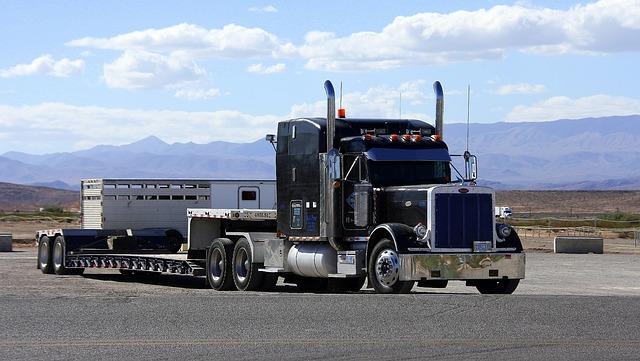The Road Less Traveled: Exploring Alternative Routes to Avoid Truck Tolls
The rising costs associated with tolls on highways have become a significant concern for truck drivers and logistics companies across the United States. With tolls often amounting to hundreds, if not thousands, of dollars per trip, many truckers are seeking alternative routes that not only save costs but also provide a safer and more efficient travel experience. In this article, we delve into the intricacies involved in finding toll-free routes and explore the benefits and challenges of taking the road less traveled.
The Economic Impact of Toll Roads
Toll roads are designed to fund infrastructure development, maintenance, and improvements. However, the financial burden placed on truck drivers and freight carriers can lead to inflated operational costs. For many businesses, the tolls contribute to an unsustainable financial model, especially as competition continues to drive down profit margins. The economic impact goes beyond just the price paid at the toll booth; it affects delivery timelines, fuel consumption, and wear on vehicles.
Why Avoid Toll Roads?
Truck drivers and logistics managers often explore alternative routes for several reasons:
First and foremost, cost savings play a crucial role. Avoiding tolls can significantly decrease the total cost of transportation, which accumulates over time and across multiple shipments. Additionally, some tolls are variable and can increase during peak travel hours, making route planning even more critical.
Safety is another concern. Many toll roads are heavily trafficked, presenting a higher risk of accidents. Furthermore, some lesser-known roads may have less congestion, making them safer for larger vehicles, which may require longer stopping distances and more room to maneuver.
Environmental considerations also influence the decision to avoid toll roads. More congested paths that include tolls often lead to longer delays and higher fuel consumption, contributing to increased emissions. By using alternative routes with less traffic, truckers can not only save money but also minimize their carbon footprint.
Strategies for Finding Toll-Free Routes
Finding the best alternative routes to avoid tolls involves a combination of planning and technology. Here are several strategies that drivers can employ:
Using navigation apps is perhaps the most effective method. Many GPS applications now allow users to filter routes based on cost. These apps can provide real-time traffic information and suggest less-congested paths that are toll-free. Popular platforms like Google Maps or Waze can be instrumental in this regard, as they offer dynamic rerouting options that account for current conditions.
In addition to technology, maintaining an expert-level understanding of the road network is invaluable. Truck drivers should familiarize themselves with county and state highways, as they often offer viable alternatives to toll-heavy interstates. Local knowledge can also help in identifying shortcuts and less traveled roads that do not incur tolls.
Networking with other truckers is another valuable resource. Engaging in discussions with fellow drivers can yield tips and shared experiences that can enhance route planning. Online forums and social media groups focused on trucking can be great platforms for exchanging information about toll-free routes.
Challenges of Toll-Free Routes
While avoiding toll roads can offer savings and efficiencies, it is essential to recognize that alternative routes come with their complexities. Many backroads and county highways may not accommodate the size and weight of heavy trucks. This necessitates thorough research and pre-planning before embarking on a new route.
Additionally, backroads may feature steep grades, sharp turns, or rough conditions that could pose risks to larger vehicles. Drivers must remain vigilant and prepared for unexpected road conditions that could affect their journey. Understanding the limitations of the chosen route and being able to make adjustments on the fly is crucial for successful navigation.
Legal Considerations
Truck drivers must also be aware of regulations regarding trucking on specific roads. Some jurisdictions have weight restrictions or permit requirements that apply to certain routes. It is critical to stay informed about local laws and restrictions to avoid fines or legal complications during transport.
Case Studies: Successful Toll-Avoidance Strategies
Various trucking companies have implemented successful strategies for avoiding tolls while maintaining efficiency. One notable case involved a logistics company that made a concerted effort to avoid a toll-heavy path between New York and Michigan. Through the use of advanced route-planning software, the company identified several alternative routes that cut travel time by 10% while eliminating toll costs entirely. Their transportation costs subsequently decreased significantly, allowing them to offer competitive pricing without sacrificing profit margins.
Another example is a regional freight carrier that invested in driver training to emphasize route management and cost-saving strategies. By equipping drivers with the tools needed to identify and utilize toll-free routes, the company not only saw savings in toll expenses but also improved driver satisfaction and reduced turnover rates.
The Future of Toll Roads
The toll road system is evolving, and potential future changes could impact how truckers navigate across the U.S. As municipalities increasingly seek revenue sources to fund infrastructure, tolls might become more prevalent, leading to new challenges for those wanting to avoid additional fees.
Additionally, advancements in technology, such as automated freight solutions and innovations in GPS systems, hold promise for enhancing route planning capabilities, making it easier for truckers to navigate intricate networks of toll and toll-free routes.
Conclusion
While toll roads serve a purpose in funding critical transportation infrastructure, the financial impact on truck drivers and logistics companies cannot be ignored. By exploring and employing alternative routes that bypass tolls, many are finding a path to greater cost efficiency, increased safety, and lower environmental impact. While this journey may come with challenges—road conditions, regulations, and planning—the potential rewards make the road less traveled a viable option worth considering.
In a rapidly changing landscape of transportation, those willing to seek out alternative routes will likely find innovative solutions to ensure their logistics operations remain both competitive and cost-effective in the years to come.
